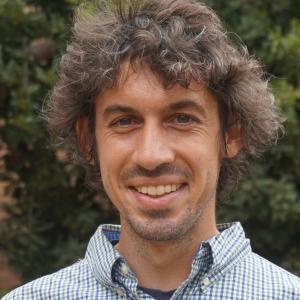2024b. Semi-embedded clauses in Aisi: Assertion, disengagement, and insubordination. Functions of Language 31(2). 115–141.
2024a. Don Daniels, Zoë Haupt & Melissa M. Baese-Berk. The phonetics of vowel intrusion in Sgi Bara. Journal of Phonetics 104. 101323.
2022c. Unusual categories can be stable: The case of Sogeram kin terms. Anthropological Linguistics 64(1-2). 56–85.
2022b. Laura McPherson, Don Daniels, and Caroline Hendy. “Lexical and grammatical tone in Wiru (Southern Highlands Province, PNG).” Proceedings of the 1st Tone and Intonation conference.
2022a. Don Daniels & Kelsey Daniels. Managing data for descriptive and historical research. In Andrea L. Berez-Kroeker, Bradley McDonnell, Eve Koller & Lauren Collister (eds.), The open handbook of linguistic data management, 327–334. MIT Press.
2021b. The issue of arbitrariness in syntactic reconstruction. Folia Linguistica Historica 55. 393–428.
2021a. Caroline Hendy & Don Daniels. The Wiru noun-modifying clause construction. Oceanic Linguistics 60(1). 72–102.
2020. Grammatical reconstruction: The Sogeram languages of New Guinea. De Gruyter.
2020. The history of tense and aspect in the Sogeram family. Journal of Historical Linguistics 10(2). 167–208.
2019d. Don Daniels & Joseph Brooks. The history of *=a: Contact and reconstruction in northeast New Guinea. Journal of Language Contact 12(3). 533–568.
2019c. Don Daniels & Greville G. Corbett. Repartitioning. Language 95(4). 711–750.
2019b. Don Daniels, Danielle Barth & Wolfgang Barth. Subgrouping the Sogeram languages: Designing datasets to capture diversification. Journal of Historical Linguistics 9(1): 92–127.
2019a. Using phonotactics to reconstruct degrammaticalization: The origin of the Sirva pronoun be. Diachronica 36(1): 1–36.
2017b. A method for mitigating the problem of borrowing in syntactic reconstruction. Studies in Language 41(3): 577–614.
2017a. Gants is a Sogeram language. Language and Linguistics in Melanesia 35: 82–93.
2016. Magi: An undocumented language of Papua New Guinea. Oceanic Linguistics 55(1): 199–224.
2014. Complex coordination in diachrony: Two Sogeram case studies. Diachronica 31(3): 379–406.
2014. Koch, Harold, Robert Mailhammer, Robert Blust, Claire Bowern, Don Daniels, Alexandre François, Simon J. Greenhill, Brian D. Joseph, Lawrence Reid, Malcolm Ross, and Paul Sidwell. Research priorities in historical-comparative linguistics: A view from Asia, Australia and the Pacific. Diachronica 31(2): 267–278.
2010. A preliminary phonological history of the Sogeram languages of Papua New Guinea. Oceanic Linguistics 49(1): 163–193.


